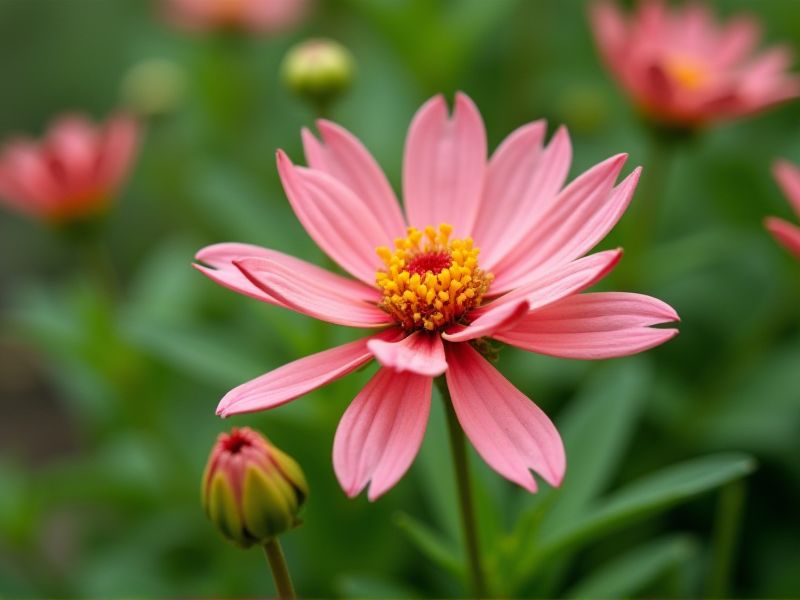
Perennial plants such as lavender, sedum, and daylilies thrive with minimal maintenance, making them ideal for busy gardeners. These resilient species often exhibit drought tolerance, which reduces the need for frequent watering. Lavender not only offers aromatic benefits but also attracts pollinators to your garden, enhancing biodiversity. Sedum varieties, known for their succulent leaves, provide vibrant color and texture with little effort required for care. Planting daylilies yields striking blooms in various colors, ensuring a lively garden throughout the growing season without the hassle of constant upkeep.
List of some Perennial plants that require low maintenance
- Coneflower (Echinacea purpurea)
- Black-eyed Susan (Rudbeckia hirta)
- Daylily (Hemerocallis spp.)
- Lavender (Lavandula spp.)
- Hostas (Hosta spp.)
- Sedum (Sedum spp.)
- Catmint (Nepeta spp.)
- Russian Sage (Perovskia atriplicifolia)
- Ornamental Grass (Miscanthus sinensis)
- Yarrow (Achillea millefolium)
Important things about Perennial plants that require low maintenance
Drought Tolerance
Drought-tolerant perennial plants are ideal for low-maintenance gardens, conserving water while providing beauty. Varieties such as Sedum, Echinacea, and Agastache thrive in arid conditions, requiring minimal irrigation once established. These plants not only withstand dry spells but also attract pollinators, enhancing biodiversity in your landscape. Incorporating such resilient perennials can simplify garden care while ensuring vibrant blooms throughout the seasons.
Pest Resistance
Perennial plants known for their low maintenance often boast natural pest resistance, making them an ideal choice for gardeners seeking resilience and ease of care. Varieties such as lavender and echinacea not only enhance the garden's aesthetic but also deter common pests with their aromatic qualities and tough foliage. By selecting these robust plants, you can reduce the need for chemical pesticides, which benefits both the environment and your garden's ecosystem. Emphasizing native perennial species can further increase biodiversity and promote a balanced habitat that naturally controls pest populations.
Long Lifespan
Perennial plants, known for their longevity and resilience, can thrive in your garden with minimal upkeep. Varieties such as the peony, lavender, and hosta return year after year, offering beauty without the need for constant attention. These hardy specimens often require little watering after establishment and can adapt to a range of soil types, making them perfect for busy gardeners. By incorporating perennial plants into your landscape, you create a vibrant and sustainable environment that flourishes over time.
Low Soil Fertility Needs
Perennial plants, such as lavender, sedum, and daylilies, thrive in low soil fertility conditions, making them ideal for gardens with nutrient-poor soil. These resilient species are drought-tolerant and require minimal care, allowing you to enjoy a vibrant landscape without extensive upkeep. By incorporating perennials that are well-suited for poor soil, you can enhance biodiversity while promoting soil health over time. Choosing these low-maintenance options enables you to create a beautiful garden that flourishes with minimal intervention.
Minimal Pruning Required
Perennial plants like daylilies, sedums, and lavender are ideal for low-maintenance gardens, thriving with minimal pruning. Daylilies produce vibrant blooms throughout the summer and only require occasional deadheading for optimal growth. Sedums, known for their drought resistance, need little attention aside from occasional division to maintain size. Lavender, prized for its aromatic foliage, can be lightly pruned in early spring to encourage bushy growth while preserving its natural shape.
Season-Long Blooms
Perennial plants such as daylilies, coneflowers, and sedums are perfect choices for your garden if you're looking for season-long blooms with minimal upkeep. These hardy varieties thrive in various climates and soil types, providing vibrant colors and textures from spring to fall without extensive care. Low-maintenance perennial plants typically need only occasional watering and deadheading to enhance their blooming potential. By incorporating these easy-to-care-for species into your landscape, you can enjoy a flourishing garden while saving time and effort.
Attracts Pollinators
Perennial plants such as coneflowers, black-eyed Susans, and lavender are excellent choices for attracting pollinators while requiring minimal maintenance. These resilient species thrive in a variety of soils and conditions, making them suitable for diverse garden environments. By incorporating these plants, you'll create a vibrant habitat that supports bees, butterflies, and other beneficial insects, ultimately enhancing your garden's ecosystem. Their long-lasting blooms not only provide visual appeal but also offer essential nectar and pollen resources throughout the growing season.
Ground Cover Capabilities
Perennial plants such as Creeping Thyme, Vinca Minor, and Sedum provide excellent ground cover while requiring minimal upkeep. These resilient plants thrive in various soil types and can withstand drought conditions, making them ideal for low-maintenance gardens. By establishing a dense mat, they suppress weeds and enhance soil stability, contributing to a healthier ecosystem. Incorporating these perennials in your landscape not only beautifies your space but also promotes biodiversity and reduces gardening labor.
Adaptive To Various Soil Types
Perennial plants that require low maintenance are ideal for gardeners seeking resilience and beauty without the need for constant care. These plants can thrive in diverse soil types, including sandy, loamy, and clay soils, making them versatile additions to any landscape. Notable examples include daylilies, black-eyed Susans, and hostas, which not only adapt well to varying soil conditions but also provide vibrant blooms year after year. By incorporating these hardy perennials into your garden, you can enjoy a flourishing environment with minimal effort and upkeep.
Easy Propagation Methods
Perennial plants such as hostas, daylilies, and sedums offer easy propagation methods that suit gardeners seeking low-maintenance options. Division is a popular technique, allowing you to separate mature plants into smaller sections, promoting growth and enhancing garden density. Another method is stem cuttings, where you take healthy stems to develop new roots in soil or water, ensuring a seamless transition into your garden. These straightforward approaches make it simple for you to expand your perennial collection while enjoying vibrant blooms year after year.
